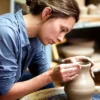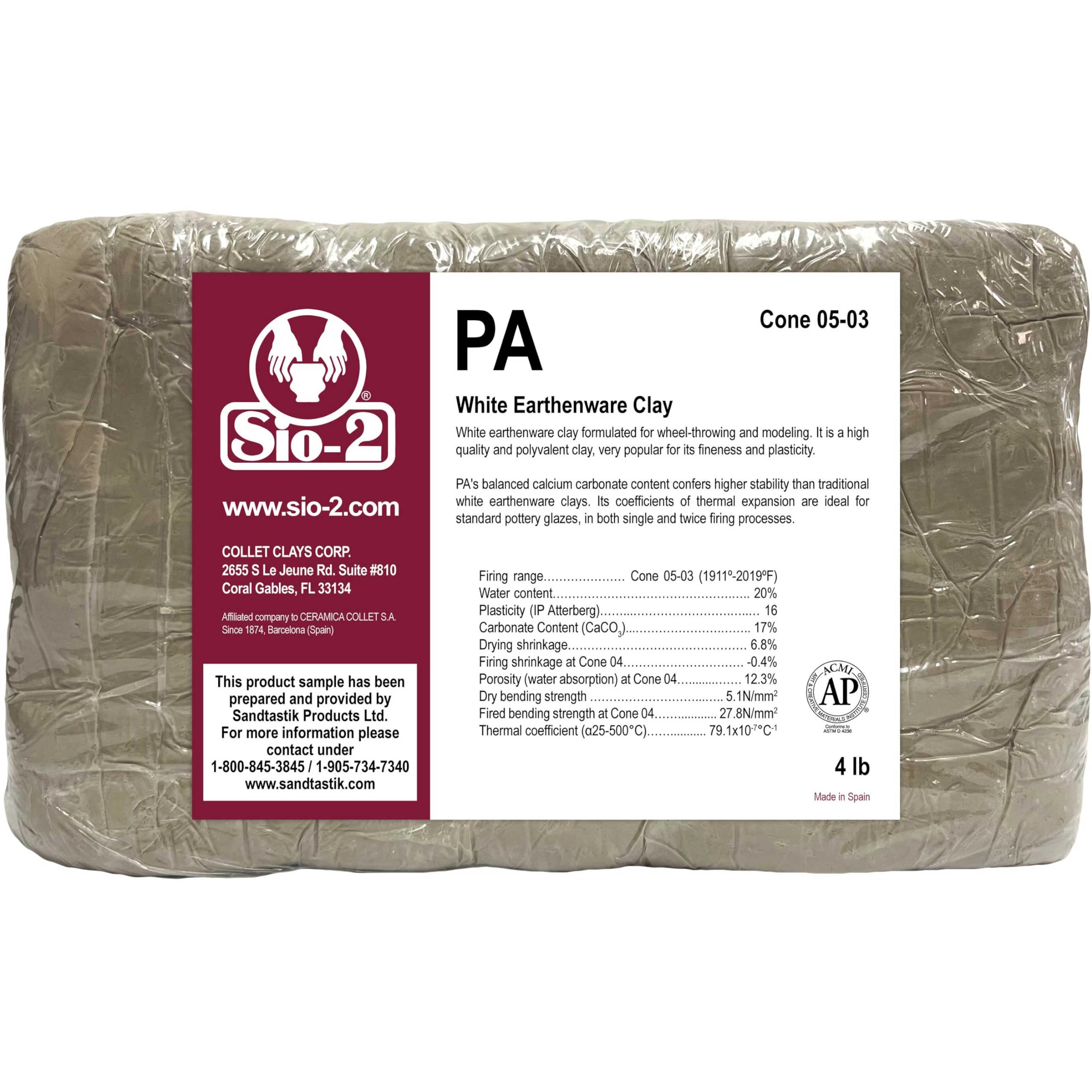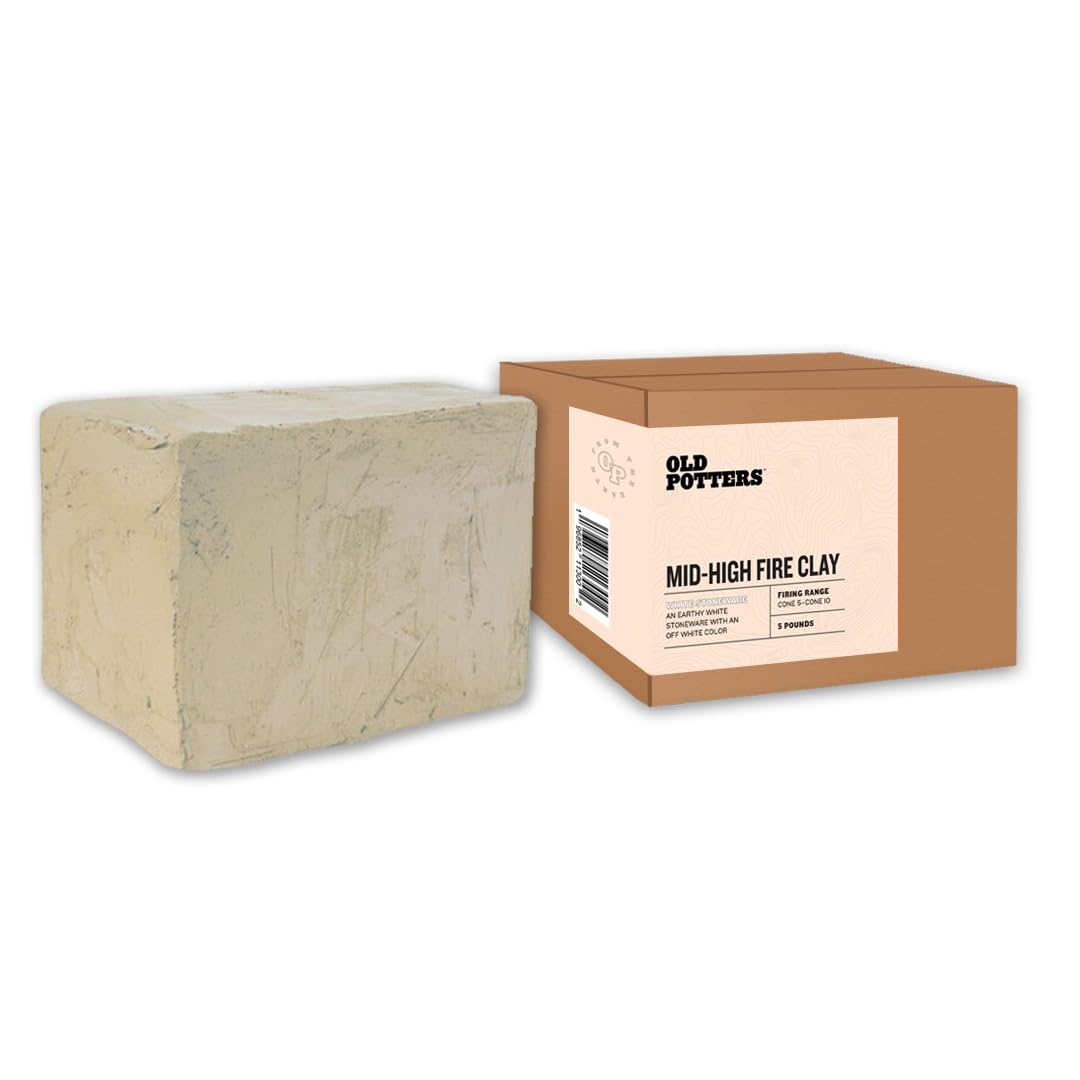Pottery has long been an artistic craft, appreciated for both its functionality and beauty.
Among the materials available for pottery, white earthenware stands out for its bright and pristine finish, making it an ideal choice for creating decorative pieces and functional ceramics.
This type of clay is relatively easy to work with, providing a smooth and forgiving medium that suits both beginners and experienced potters.
White earthenware is favored for its fine texture, which allows for detailed work, and its ability to take on vivid glazes, producing stunning results.
When choosing the best white earthenware for pottery projects, there are a few crucial factors to consider.
The plasticity of the clay can affect how easy it is to shape and manipulate.
Another key attribute is the firing temperature; white earthenware typically requires a lower firing temperature compared to other clays.
Additionally, considering the shrinkage rate during drying and firing is important, as it can impact the final size of your piece.
These factors play a significant role in how well your pottery turns out, and understanding them can help ensure a successful crafting experience.
Best White Earthenware for Pottery
We’ve researched and compiled the best options for white earthenware, perfect for pottery enthusiasts of all skill levels.
Our selection focuses on quality, versatility, and user feedback to help you make an informed choice.
Old Potters Low Fire Pottery Clay
This clay is ideal for both beginners and advanced artists aiming to shape beautiful pottery creations with ease.
- Exceptionally easy to mold and shape
- Suitable for all skill levels
- Maintains moisture well
- Prone to cracking without additional additives
- Higher price point
- Requires careful handling to prevent air bubbles
Working with the Old Potters Low Fire Pottery Clay has proven to be a breeze.
We find its flexibility and texture particularly impressive.
Straight out of the package, it’s soft and ready for immediate work, making it a preferred choice for those spontaneous creative sessions.
This clay makes it simple for anyone, whether they’re just starting out or possess a wealth of pottery experience, to create stunning sculptures or pots.
Its professional quality attributes, like remaining moist and easy to wedge, enhance the sculpting experience.
However, for those more intricate designs, it’s important to ensure air is fully expelled to avoid those dreaded kiln explosions.
The end results are worth these few extra precautions.
Our artistic vision has room to flourish with the smooth consistency keeping projects as ambitious as our skills allow.
The price is slightly higher compared to alternative clays, but this is offset by its performance.
While it may seem an investment, it really shines through the crafting process, easily creating intricate details and shapes.
From wheel throwing to hand-building, it provides a delightful tactile journey for every clay artist.
SIO-2 White Earthenware Clay
This is an excellent choice for potters looking for versatile, low-fire clay suitable for both wheel-throwing and hand-building.
- Excellent plasticity and smoothness make it easy to mold.
- Ideal for a variety of glazing techniques.
- Non-toxic, ensuring a safe crafting experience.
- Comes slightly wetter than expected, requiring some drying time.
- Pricing may vary, with discounts sometimes being misleading.
- Can be inconvenient for projects needing high-fire temperatures.
The SIO-2 White Earthenware offers a traditional, classic look that is cherished by both amateurs and seasoned potters.
We found its smooth texture and pliability perfect for intricate work, whether on the wheel or in hand-building practices.
The natural white finish provides a blank canvas that enhances most glazes, allowing us to experiment with colors and finishes confidently.
This clay’s compatibility with both single and twice-fired processes adds flexibility in our pottery projects.
While it arrives a bit wetter than some might anticipate, adjusting post-arrival moisture levels is simple.
It’s a reliable clay for those who appreciate its natural composition and the creative potential it unlocks in crafting beautifully sculpted items.
Amaco White Clay No. 25
Amaco White Art No. 25 delivers exceptional results for both beginners and experienced potters.
- Great plasticity makes it easy to shape large pieces.
- Retains glaze colors with clarity upon firing.
- Non-toxic and safe for classroom use.
- The clay doesn’t work with high-fire glaze options.
- The cost of delivery can be a bit steep.
- Moisture levels require careful storage to prevent drying out.
We found this clay remarkably easy to use, particularly for creating larger items.
The enhanced plasticity sets it apart, as it handles well and shapes beautifully on the wheel.
The true white color of Amaco White Art No. 25 stands out immediately after firing, offering an excellent backdrop for both opaque and transparent glazes.
We love how the colors appear vibrant and retain their intended brilliance.
For classroom settings or workshops, this clay is a solid choice due to its non-toxic nature.
Just ensure that it is stored properly to maintain its moisture content, which is essential for optimal performance.
Bastex Earthenware Clay
The Bastex Earthenware Clay is a versatile, beginner-friendly option for pottery enthusiasts looking to experiment and create at home.
- Soft and easy to shape
- Reliable results after firing
- Organic and non-toxic
- Can dry out quickly if not stored properly
- Prone to mold in damp conditions
- May require additional moisture
When we first opened the package, we noticed how smooth and pliable the clay felt in our hands.
Its malleability allowed us to mold intricate designs with ease, making it a fantastic choice for both new and experienced potters.
The transformation after firing was also impressive, resulting in a bright and consistent white that enhanced our pieces.
There are a few considerations to keep in mind, particularly its tendency to dry out when left exposed.
We found that keeping it in an air-tight container helped maintain its moisture.
Additionally, those sensitive to strong odors should note that mold can form, although it’s generally harmless and useful.
Old Potters Mid High Fire White Stoneware Clay
This clay is a fantastic choice for those seeking high-quality white stoneware for their pottery projects.
- Smooth consistency makes it easy to work with.
- Sturdy when fired, resulting in durable pottery.
- Suitable for all skill levels, from beginners to experts.
- May require more wedging for perfect consistency.
- Some users find it initially challenging to work with on the wheel.
- Limited availability might require advance purchase planning.
As we tested the Old Potters Mid High Fire White Stoneware Clay, its smooth texture became immediately apparent.
It allows for seamless shaping on the pottery wheel, which can be a blessing for both beginners and experienced potters alike.
This clay holds form impressively well, providing a stable medium for crafting intricate designs.
The durability post-firing is another standout feature.
Our finished pieces exhibited great strength, making them an ideal fit for functional pottery.
This can be particularly rewarding for high-use items like bowls and mugs.
Plus, its ability to handle firing from cone 5 to 10 allows for versatile firing results.
Despite its impressive qualities, there are some challenges.
We noticed that preparation is key; thorough wedging may be necessary to attain optimal workability.
Additionally, the stock levels can sometimes fluctuate, so planning ahead is recommended to ensure availability for upcoming projects.
Buying Guide
When choosing the best white earthenware for pottery, it’s essential to consider several key features.
Let’s explore some aspects that will help us make an informed decision.
Texture
The texture of the clay affects how it feels in our hands and its suitability for different pottery techniques.
We should look for smoothness and plasticity, which make shaping easier.
Firing Temperature
Different clays have different firing temperature ranges.
Paying attention to these ranges ensures our pieces are durable and finished correctly.
It’s vital to match the clay’s firing temperature with our kiln’s capabilities.
Plasticity and Workability
We need clay that is both workable and plastic.
This combination allows us to mold intricate designs or maintain larger forms without cracking.
It’s important to test for qualities that suit our specific projects.
Shrinkage Rate
All clays shrink when drying and firing.
Knowing the shrinkage rate helps us anticipate changes to our designs.
We should check this rate to avoid ending up with unexpected sizes.
Safety Considerations
White earthenware should be free from harmful substances.
Checking for non-toxic ingredients ensures the safety of our pottery, especially if it involves functional ware like dinner plates or mugs.
Table: Key Features
| Feature | Importance |
|---|---|
| Texture | Smooth and plastic |
| Firing Temperature | Matches kiln capabilities |
| Plasticity | Easy to shape |
| Shrinkage Rate | Predictable size changes |
| Safety | Non-toxic ingredients |
Frequently Asked Questions
We explore the nuances between different pottery materials and the primary types of clay.
Our aim is to provide clarity on these essential topics in pottery-making.
What are the key differences between stoneware and earthenware in pottery?
Stoneware and earthenware differ in firing temperatures and textures.
Stoneware is fired at higher temperatures, making it more durable and chip-resistant.
It has a denser, often non-porous finish.
Earthenware, fired at lower temperatures, features a more porous texture and is more fragile, requiring glazing to hold liquids.
What are the primary types of clay used in pottery?
The primary clays include earthenware, stoneware, and porcelain.
Earthenware is known for its plasticity and ease of shaping.
Stoneware clay is versatile, suitable for functional pieces.
Porcelain, valued for its fine texture and translucency, is known for its strength and is often used in fine china.







